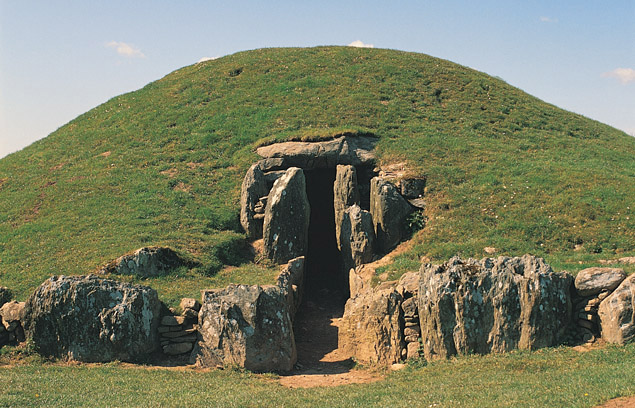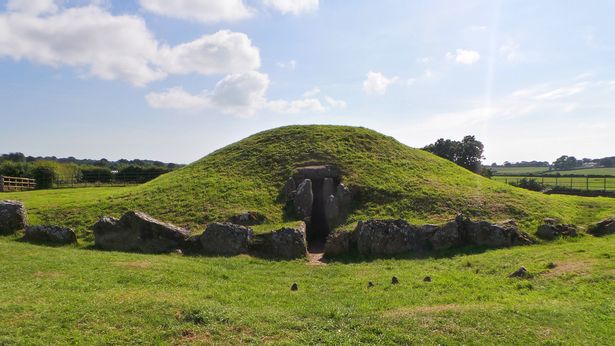Bryn Celli Ddu prehistoric monument reveals more of its mystery
The 5000 year old mysterious Late Neolithic passage tomb of Bryn Celli Ddu is a remarkable structure. The monument appears to have begun in the later Neolithic period around 5,000 years ago, as a ‘henge’ or a ritual enclosure. It consisted of a bank (now lost) around an inner ditch, which enclosed a circle of upright stones. The ditch originally measured 21 meters in diameter. The outer edge can still be seen and a number of stones from the inner stone circle also survive. Then at a later date, towards the end of the Neolithic period, a passage tomb was built, of the type of found around the Irish seaboard and down to Brittany. A structure built to protect and pay respect to the remains of the ancestors.
A particular feature of the tomb is that on the summer solstice a beam of light is cast down the passage, lighting up the chamber. A decorated pattern stone was discovered near a ceremonial pit at the back of the chamber. First explored seriously in 1865, the tomb was thoroughly excavated in 1928–29. Those excavations revealed something of the long and complex history of the site. Over the last three years 10 new rock art panels have been discovered at the site. In June of this year further archaeological excavations have been undertaken with a focus on a series of circular anomalies revealed from a geophysical survey of an area located immediately behind Bryn Celli Ddu.
Now other burial sites, thought to date from the Late Neolithic to the early Bronze Age, have been found. This shows that Bryn Celli Ddu is not alone in its landscape, but appears to have been the focus for a cluster of burial monuments that grew around it. So that Bryn Celli Ddu sits in a much more complicated landscape that previously thought. Archaeologists have identified a total of four burial cairns and evidence of ritual activity. This indicates that Bryn Celli Ddu can be compared to the significant Irish tomb complexes of Loughcrew and Newgrange in the Boyne Valley which are also similar in style to the Welsh monument.







